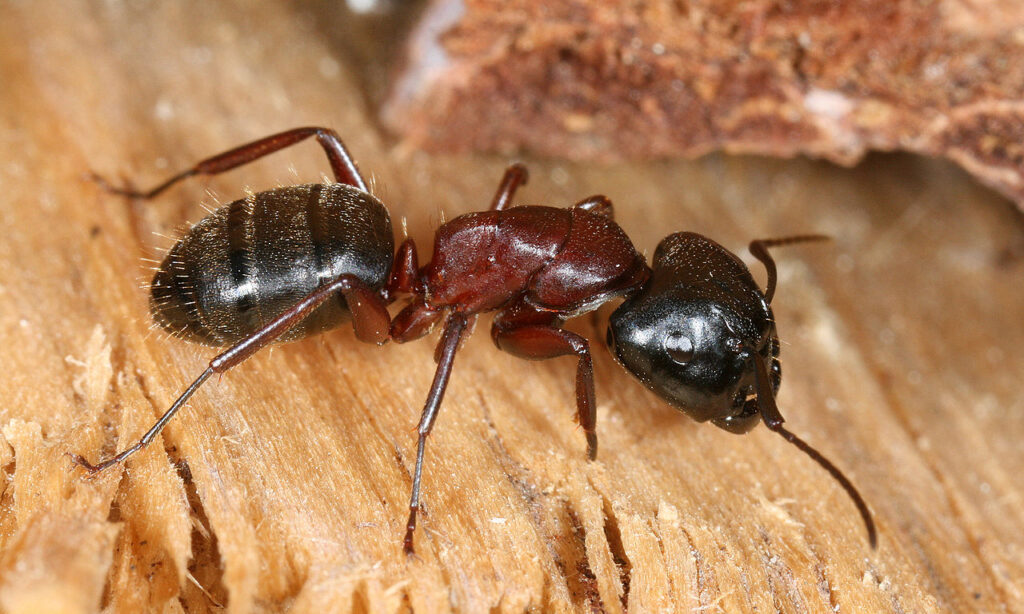
Overview
Carpenter ants (Camponotus spp.) are the largest ant species found in North America, with adults measuring between 1/4 to 3/4 of an inch. These ants are typically black, brown, or a combination of both, often displaying reddish hues. Unlike termites, carpenter ants do not eat wood; instead, they create intricate networks of smooth galleries by hollowing out wood with their strong mandibles. These wood shavings resemble fine sawdust and can often be found at the base of infested structures.
Carpenter Ants Habitat and Behavior
Carpenter ants are most commonly found outdoors in decaying wood, such as fallen trees, logs, and stumps. They can also establish nests in homes, particularly in areas where wood is damp or decaying. These nocturnal foragers travel up to 100 yards from their nest in search of food, favoring sugary substances over proteins and fats. While they do not sting, their bites can be painful, and they may defend their nests aggressively if threatened.
Identifying an Infestation
One of the telltale signs of a carpenter ant infestation is the presence of wood shavings or frass near wooden structures. Other indicators include:
- Noisy activity within walls during the night
- Visible ants trailing in and out of structures
- Hollow-sounding wood when tapped
Control Measures for Carpenter Ants
Effective control of carpenter ants involves a combination of inspection and treatment strategies:
- Inspection: Conduct thorough inspections both indoors and outdoors to locate nests. Look for signs of damage, frass, and the ants themselves.
- Nest Treatment: If a nest is located, treatment can often be done easily with insecticidal dust or sprays. It’s important to target both the nest and the foraging trails.
- Fumigation: For severe infestations, fumigation may be necessary. This process involves sealing the affected area and introducing a gas like methyl bromide to eliminate the ants.
- Preventive Measures: After treatment, it’s crucial to reduce the likelihood of re-infestation. Trim back any overhanging tree limbs that may provide access to your home and ensure proper drainage around the foundation to prevent moisture buildup.
Why Professional Help May Be Needed
Carpenter ant control can be complex due to their nesting habits and potential for structural damage. Seeking the expertise of a pest control professional can ensure that the problem is effectively managed and prevents future infestations.
By understanding the behavior and habits of carpenter ants, homeowners can take proactive steps to protect their property. Regular inspections and prompt action at the first signs of an infestation can save time, money, and stress.
